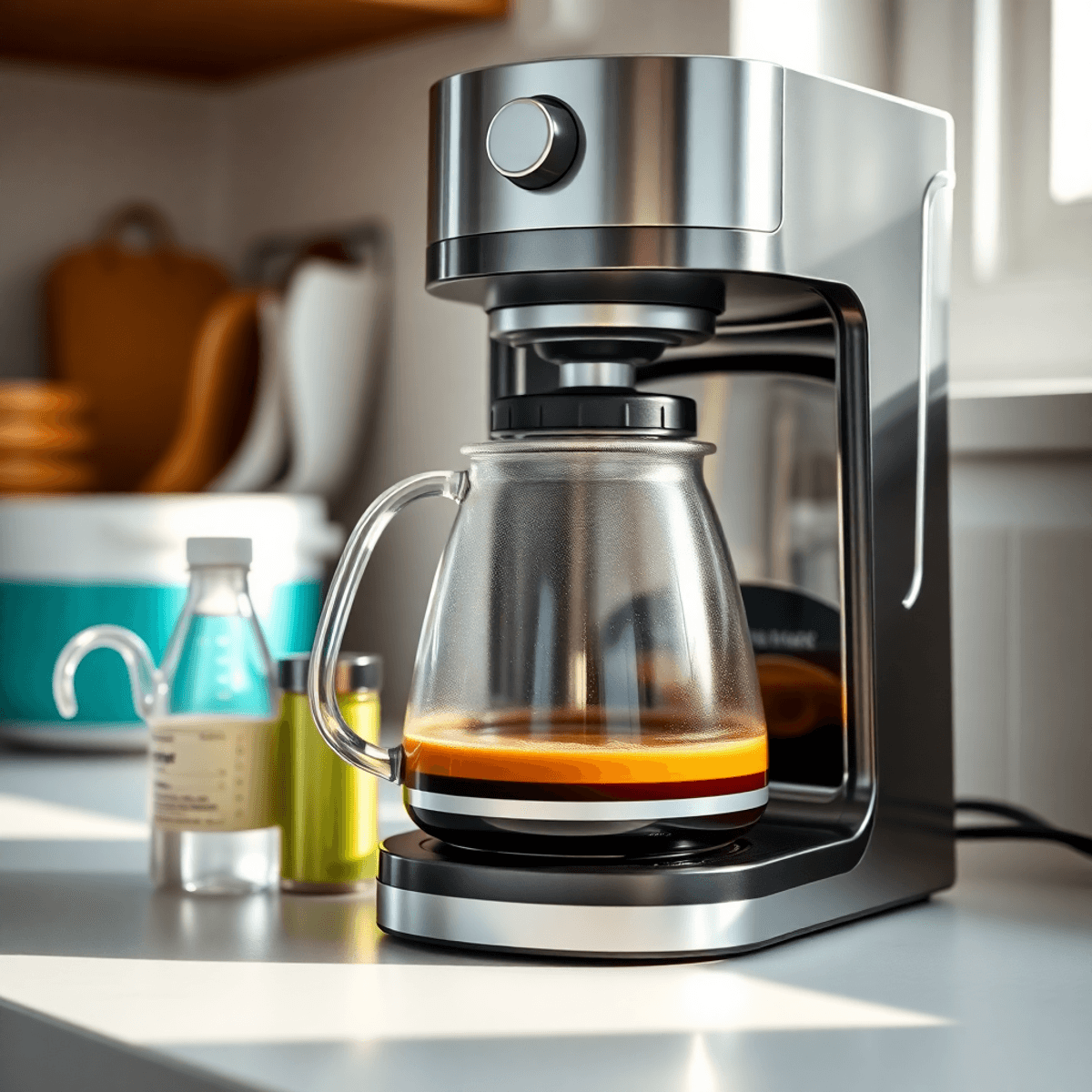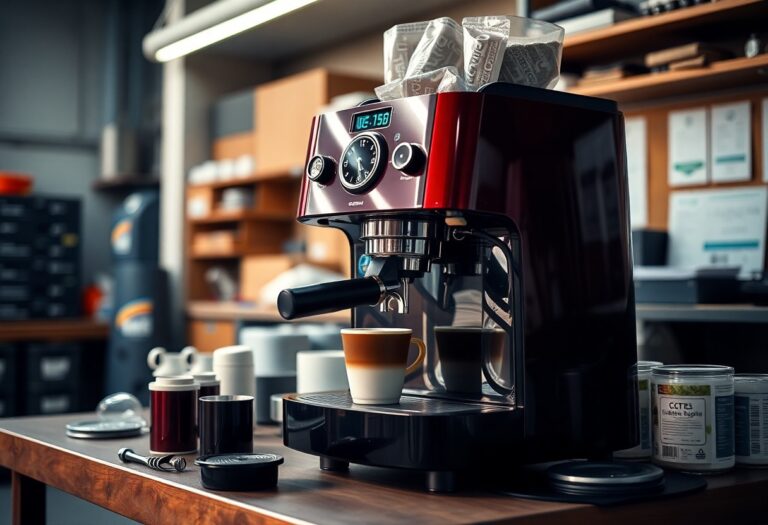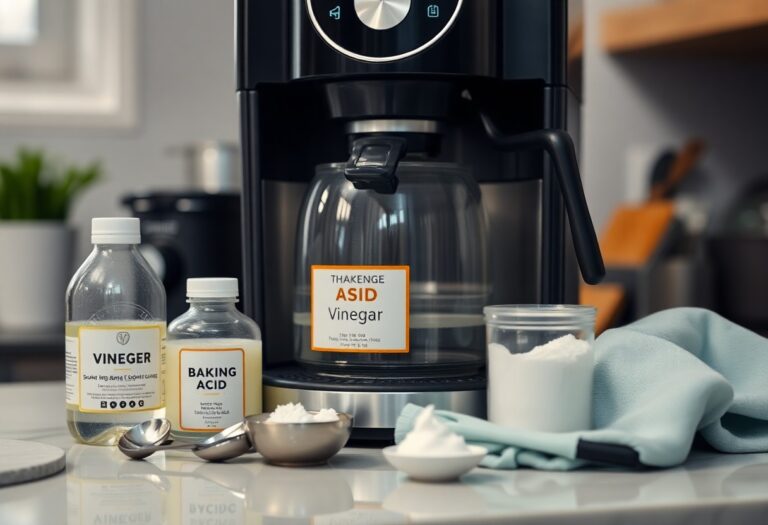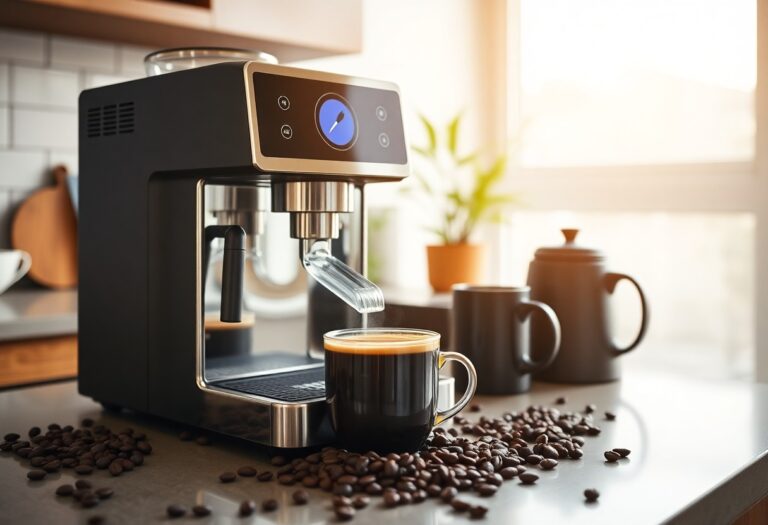How Much Vinegar to Clean a Coffee Machine: Proper Ratios
Cleaning a coffee machine with vinegar is a simple yet highly effective way to maintain your device’s performance and flavor quality. Vinegar acts as a natural descaling agent, breaking down mineral deposits and coffee residue that build up over time. Using the proper vinegar-water ratio is crucial for achieving the best cleaning results without damaging your machine.
How Much Vinegar to Clean a Coffee Machine: Proper Ratios plays a vital role in ensuring thorough cleaning. Too much vinegar can leave behind an unpleasant taste and odor, while too little may fail to remove all buildup effectively. Striking the right balance guarantees your coffee machine stays clean, hygienic, and functions optimally.
Benefits of cleaning a coffee machine with vinegar include:
- Removal of calcium deposits that affect brewing temperature and taste
- Elimination of coffee oil residues that cause bitterness and clogging
- Natural disinfection due to vinegar’s acidic properties
- Prolonged lifespan of the machine by preventing scale-related damage
Understanding the importance of proper ratios sets the foundation for maintaining your coffee maker in top condition. The following sections will guide you through recommended ratios, cleaning steps, and maintenance tips tailored for any coffee enthusiast.
Additionally, knowing how to effectively use your coffee machine after cleaning can greatly enhance your brewing experience. Whether you’re using an espresso machine or a filter coffee machine, understanding the specific brewing instructions or brewing guide can make a significant difference in the quality of your coffee.
The Recommended Vinegar-Water Ratio for Cleaning Coffee Machines
The most effective vinegar-water ratio for cleaning your coffee machine is a simple 1:1 mix of white vinegar and water. This means equal parts of white vinegar and water combined to create a cleaning solution that balances acidity and gentleness.
Why half white vinegar and half water?
- Optimal acidity: White vinegar alone is highly acidic, which helps dissolve mineral deposits like calcium buildup inside the coffee machine. Diluting it with water reduces the harshness, preventing damage to internal components.
- Effective cleaning: This ratio maintains strong enough acidity to break down coffee oils, limescale, and residue without leaving an overpowering vinegar smell.
- Safe for the machine: Using straight vinegar can corrode rubber seals or metal parts over time. Mixing it with water protects the longevity of your coffee maker.
Consequences of incorrect ratios
- Too much vinegar: A higher concentration increases risk of damaging sensitive parts, causing premature wear or malfunction.
- Too little vinegar: If diluted excessively, the solution becomes ineffective at removing scale and buildup, leading to persistent clogs or off-flavors.
- Uneven cleaning results: Incorrect ratios may leave behind stubborn residues that affect taste and hygiene.
Maintaining the proper 50/50 ratio ensures you harness the cleaning power of white vinegar safely and efficiently, keeping your coffee machine in top condition for brewing fresh cups every day.
Step-by-Step Guide to Clean a Coffee Machine with Vinegar
Cleaning your coffee machine with vinegar involves a precise process to ensure optimal results. Follow these detailed steps for an effective cleaning process.
1. Mixing the Vinegar-Water Solution Correctly
- Use equal parts white vinegar and water to prepare the solution. For example, if your water tank holds 4 cups, mix 2 cups of white vinegar with 2 cups of water.
- Avoid using more vinegar than water; excess acidity can damage internal components or leave a strong aftertaste.
- Using less vinegar dilutes its effectiveness, reducing its ability to break down mineral deposits and coffee oil residues.
2. Filling the Water Tank Properly
- Pour the vinegar-water mixture directly into the clean water reservoir of your coffee machine.
- Ensure the tank is filled up to its maximum capacity or at least enough to complete a full brewing cycle.
- Double-check that no leftover water or other liquids remain in the tank before adding the cleaning solution; this prevents dilution and maintains cleaning strength.
3. Running the Brewing Cycle and Allowing Steeping Time
-
Start the brew cycle and allow it to run about halfway through.
-
Turn off the machine once it reaches halfway and let the vinegar solution steep inside for 30 to 45 minutes.
This steeping period allows vinegar’s acidity time to dissolve mineral scale and loosen coffee oils clogged in pipes and heating elements.
-
After steeping, resume and complete the brewing cycle, letting all the vinegar-water solution pass through as if you were making coffee.
4. Rinsing Out the Vinegar Solution
Rinsing is crucial to remove any lingering vinegar taste from your coffee machine:
- Discard any remaining liquid in the carafe after brewing with the vinegar solution.
- Fill the water tank with fresh, clean water only—no vinegar this time.
- Run at least one or two full brewing cycles with plain water. This flushing removes residual vinegar from internal components.
- If you notice a strong vinegar smell or taste after rinsing, repeat additional rinse cycles until completely clear.
Proper rinsing ensures that your next cup of coffee tastes fresh without unpleasant acidic notes caused by leftover cleaning solution. Skipping or rushing this step diminishes your cleaning efforts and affects flavor quality.
Following these steps carefully will maintain your coffee machine’s performance while preventing buildup that impairs taste and function.
If you own a specific type of coffee machine like a K-Cup or Keurig, you may find this guide on how to clean a K-Cup coffee machine useful. Alternatively, for Keurig machines, refer to this ultimate maintenance guide or this step-by-step guide on descaling.
For those who have a Krups coffee machine, check out this comprehensive maintenance guide for specific instructions tailored to your model.
Ensuring Thorough Cleaning: Checking for Residual Vinegar and Maintenance Tips
Description of Baking Soda Test:
To check for residual vinegar in your coffee machine, perform the simple baking soda test. After rinsing the machine thoroughly post-cleaning, pour a cup of the rinse water and add a teaspoon of baking soda to it.
Significance of Fizzing Reaction:
The fizzing reaction that occurs when baking soda is added to the rinse water indicates the presence of residual vinegar. If you observe fizzing, it suggests that there is still vinegar left in the machine that needs further rinsing.
This test is crucial as any remaining vinegar can affect the taste of your coffee and potentially damage the internal components of the coffee maker over time. By ensuring that there is no residual vinegar left after cleaning, you maintain the quality of your brews and prolong the lifespan of your machine.
Regular Cleaning Schedule and Additional Care Tips for Coffee Machines
To maintain your coffee machine in optimal condition, establish a consistent cleaning routine. Here are essential tips to keep your machine running smoothly:
-
Deep Cleaning Frequency:
- Perform a thorough cleaning with the vinegar-water solution every one or two months, depending on how frequently you use your coffee machine. This process helps remove built-up residue and ensures that your machine continues to produce great-tasting coffee.
-
Additional Care Tips:
- After cleaning or brewing, leave the lid of your coffee machine open. Allowing air circulation will help dry out any moisture inside the machine, preventing the growth of bacteria.
By adhering to a regular cleaning schedule and following these additional care tips, you can prolong the life of your coffee machine and enjoy delicious coffee with every brew.
Conclusion
Maintaining a clean and well-functioning coffee machine hinges on understanding how much vinegar to clean a coffee machine: proper ratios is essential. Using the recommended half white vinegar and half water mix ensures effective removal of scale and residue without damaging the appliance. Regular cleaning coffee machines with vinegar keeps your brew tasting fresh and your machine running smoothly.
Key takeaways:
- Stick to the 1:1 vinegar-to-water ratio for deep cleaning.
- Follow up with thorough rinsing to eliminate vinegar taste.
- Schedule deep cleans every 1–2 months based on use.
Consistent care preserves your coffee machine’s longevity and performance.







